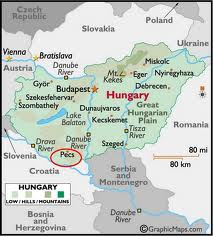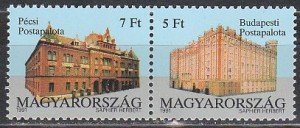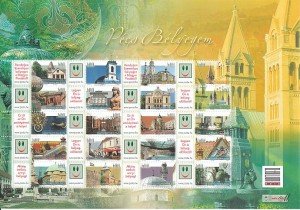 Pécs is a city with a long and colorful history originally founded by the Romans over 2,000 years ago. Over the years the city has been occupied by the Turks and later inhabited by the Germans resulting in the cultural history being greatly influenced by all these eras. Sopiane, as the Romans named it, has many artifacts of its past history still visible today, including ruins of the Roman era which date back to A.D. 350-400.
Pécs is a city with a long and colorful history originally founded by the Romans over 2,000 years ago. Over the years the city has been occupied by the Turks and later inhabited by the Germans resulting in the cultural history being greatly influenced by all these eras. Sopiane, as the Romans named it, has many artifacts of its past history still visible today, including ruins of the Roman era which date back to A.D. 350-400.
The famous Cathedral of Pecs symbolizes the metamorphosis of Pecs from its original Roman roots to the other phases of its history. Originally built in the 11th century by Bishop St. Maurice, this four-towered cathedral has been destroyed and rebuilt more than once like many buildings during wars. The Turks used it as a mosque and embellished it with a minaret (spire). At the end of the 19th century, the present neo-Romanesque exterior was added. The interior remains primarily Gothic, with some baroque additions and furnishings.
Pécs was nominated one of the European cultural capitals in 2010, an achievemnt making it second only to Budapset as a cultural center in Hungary. There are numerous museums here with the most famous being the Zsolnay museum of porcelain and ceramics. Zsolnay and Pécs, their names have always been closely related. Five successive generations of the Zsolnay family have enriched the culture of the city and added to its wealth. The heritage of the Zsolnay family exists everywhere: on the facade of old and new houses, on roofs, on sculptures and reliefs, in shop-windows, on commemorative plaques and in the exhibition of the 55-year-old Zsolnay Museum introducing the complete history of the factory. Along this same street on Chapter Row (Káptalan sor), a ‘museum street’ evolved with the Janos Pannonus Museum, the Vasarely Museum, the Amerigo Tot Museum, the Modern Hungarian Gallery and the Martyn Museum.
The old town of Pécs is awe-inspiring with the differences in architecture and it leads to one of Hungary’s most incredible central squares, the Szechenyi Ter. This square is in the center of Pecs and is its cultural, administrative and commercial center. It houses the Geza Kasim Pasha Mosque, the town hall, county hall and Zsolnay fountain.
Stamps of Pecs:
The Hungarian Post specialty souvenir sheet contains 25 different issues of locations of PECS 2010 – Europe’s Capital of Culture event.
This statue of Janos Hunyadi in Pecs commemorates the 500th anniversary of the defeat of the Turks by Janos Hunyadi at the famous Seige and Battle of Belgrade in 1456.
2009 – The Hungarian Post issued this souvenir sheet for personalized stamps. It contains the historical sites of Pecs, including the Mosques, Synagogues and the Zsolnay Fountain and many others.



![2010pecsiv[1]](https://www.hungarianstamps.com/wp-content/uploads/2012/03/2010pecsiv11-300x298.jpg)






